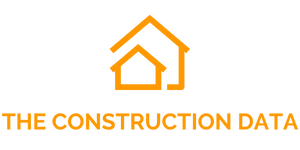
UAE Prefabricated Construction Market to Hit AED 34.28B by 2029, Growing at 6.8% CAGR
The prefabricated construction industry in the United Arab Emirates (UAE) is entering a pivotal phase of strategic transformation, fueled by a combination of economic diversification, infrastructure development, labor market dynamics, and sustainability imperatives. According to the newly released report, “United Arab Emirates Prefabricated Construction Market Intelligence and Future Growth Dynamics Databook – Q2 2025 Update”, the market is projected to reach AED 24.49 billion in 2025, reflecting an annual growth rate of 8%.
Between 2020 and 2024, the UAE prefabrication sector maintained a robust compound annual growth rate (CAGR) of 9.4%. This momentum is expected to carry forward into the next phase, albeit at a slightly moderated pace, with a projected CAGR of 6.8% from 2025 to 2029. By 2029, the market is anticipated to reach AED 34.28 billion, up from AED 22.68 billion in 2024. These figures reflect not only growing acceptance of prefabricated solutions but also the integration of modern construction techniques into national and regional infrastructure strategies.
Shifting from Tactical Adoption to Strategic Integration
The UAE’s prefabricated construction sector is rapidly evolving beyond limited-use cases to become a core component of national development strategies. Historically seen as a response to labor shortages or temporary housing needs, prefabrication is now recognized as an essential approach for delivering large-scale, high-quality, and environmentally conscious infrastructure.
This transformation is closely tied to the country’s ambitious vision for urban growth, technological leadership, and environmental sustainability. Driven by the need to meet tight megaproject timelines, manage labor costs, support net-zero goals, and build climate-resilient infrastructure, prefab methods are being adopted across multiple sectors—from hospitality and education to industrial logistics and digital infrastructure.
Expanding Applications Across Multiple Sectors
A growing variety of prefabricated products—including steel-framed modules, modular data centers, portable cabins, factory-assembled villas, and utility pods—are being utilized in the UAE’s fast-developing urban and industrial zones.
Key Sectors Benefiting from Prefab Adoption:
- Tourism and Hospitality: Factory-built villas, modular hotels, and worker accommodations are being deployed to meet demand from tourism-driven megaprojects, particularly in Abu Dhabi and Dubai.
- Logistics and Industrial Parks: Prefabricated warehouses and logistics centers allow developers to shorten construction timelines and manage costs in key trade and free zones.

- Digital Infrastructure: With growing demand for edge computing and cloud services, modular data centers and prefabricated telecom units are gaining traction.
- Social Infrastructure: Schools, clinics, emergency shelters, and temporary housing are increasingly being constructed using prefabricated cabins and pods—offering scalable, quick-to-deploy solutions for both public and private use.
Technological Enablers: BIM, Robotics, and Digital Twins
Technology is playing a central role in reshaping the UAE prefabrication ecosystem. Building Information Modeling (BIM) is now mandated in many high-rise and complex developments, enabling precise, data-driven off-site manufacturing. Robotics and automation are also transforming modular plant workflows, improving productivity, reducing errors, and supporting mass customization.
Digital twins—virtual replicas of physical assets—are being integrated into design and operational processes, allowing construction firms to simulate, test, and optimize structures before physical assembly. These capabilities are particularly valuable in reducing waste, minimizing rework, and improving long-term performance.
Strategic Partnerships and Ecosystem Development
Collaboration between public agencies, developers, contractors, and manufacturers is a key enabler of growth in the UAE prefabrication space. Developers are increasingly aligning their projects with national objectives related to sustainability, housing, and economic diversification.
Examples of Industry Collaboration:
- Public-Private Coordination: Initiatives like Expo 2020’s legacy zones and Abu Dhabi’s economic corridors are being delivered with support from leading EPC firms, such as ALEC, and prefab manufacturers.
- Manufacturer Alliances: Regional champions like Zamil Steel and NAFFCO Modular are partnering with global technology providers (e.g., Kirby, LINQ) to improve local fabrication capabilities and ensure quality control.
- Portable Cabin Specialization: Companies including Red Sea Housing and NAFFCO are scaling the use of modular cabins across healthcare, education, disaster relief, and temporary housing applications.
Key Drivers of Market Growth
- Megaproject Momentum: Projects like Dubai’s new tourism districts, Abu Dhabi’s urban redevelopment plans, and the UAE’s free zone expansions are accelerating the need for time-efficient, factory-built infrastructure.
- Labor Market Challenges: Limited availability of skilled labor and high wage costs are pushing developers toward off-site manufacturing to increase efficiency and reliability.
- Sustainability and Circular Construction Goals: Prefabrication aligns with national environmental goals by reducing material waste, energy usage, and greenhouse gas emissions.
- Smart City and Digital Infrastructure Development: The UAE’s growing emphasis on digital economy infrastructure, including labs, data hubs, and telecom systems, necessitates modular, high-tech construction solutions.
Emerging Trends to Watch
1. Automated BIM-Integrated Manufacturing Facilities
Next-generation factories in the UAE are expected to combine BIM, robotics, and AI to enable high-volume, precision manufacturing of modular units. These “smart plants” will improve scalability, reduce construction timelines, and allow real-time quality monitoring.
2. Sectoral Diversification
Prefab is expanding beyond housing into:
- Education (modular schools and campuses)
- Healthcare (clinics, labs, emergency care centers)
- Tourism (eco-lodges, modular resorts)
- Industrial use (factories, warehouses)
3. Export-Led Growth and Regional Integration
UAE prefab companies are emerging as exporters to the wider Middle East and North Africa (MENA) region. Firms such as NAFFCO and Zamil Steel are capitalizing on trade corridors and regional demand for modular solutions, building transnational supply chains and joint ventures.
4. National Policy Alignment
National development agendas such as Abu Dhabi Vision 2030 and UAE Net-Zero 2050 are embedding prefabrication into infrastructure frameworks. As a result, prefab is being prioritized for affordable housing, resilience strategies, and emergency response plans.
5. Portable Cabin Standardization
Portable cabins are evolving from temporary solutions to standardized products in areas like:
- Emergency medical services
- Disaster recovery units
- Temporary education or administrative setups
- Site labor accommodation
This is especially relevant for rapid deployment in remote or underdeveloped areas.




